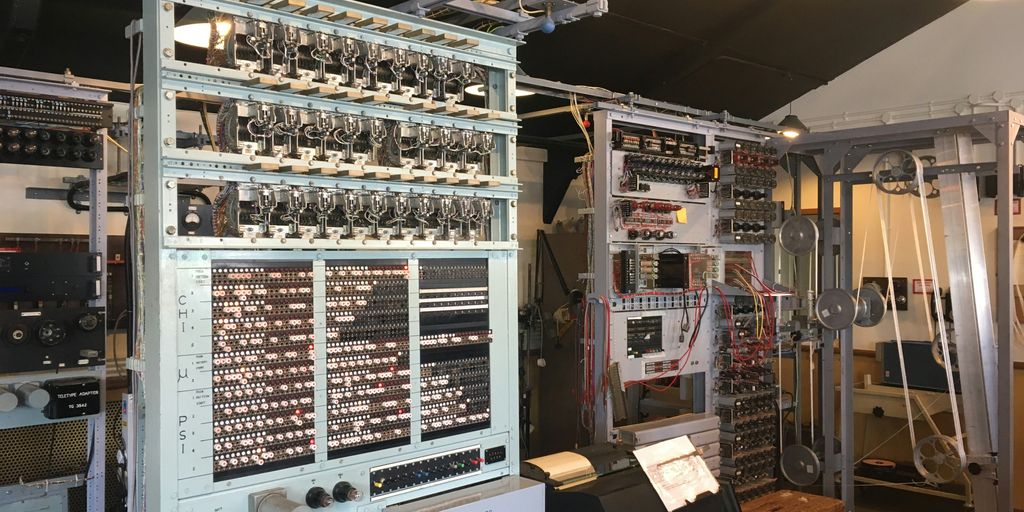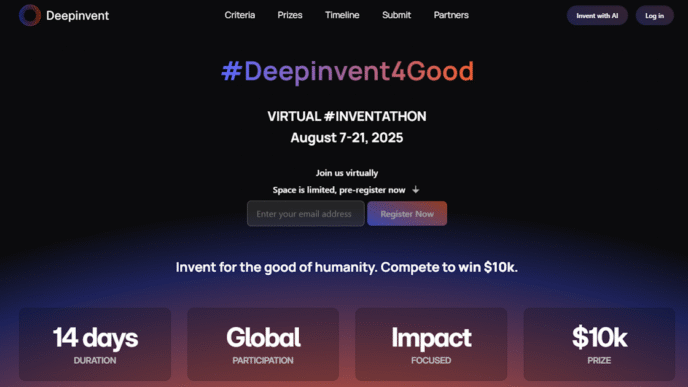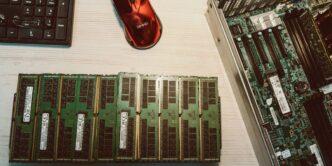The sycamore google quantum computer has been a big deal in the world of tech. It’s a machine that Google built, and it’s supposed to do things regular computers can’t. People are talking a lot about what it means for the future. We’ll look at how it works, what it can do, and why it matters.
Key Takeaways
- The sycamore google quantum computer uses special qubits to do calculations that are too hard for normal computers.
- Google’s Sycamore machine showed ‘quantum supremacy’ by solving a problem much faster than any supercomputer.
- The design of the Sycamore quantum computer involves keeping its parts extremely cold to make sure it works right.
- There’s been a lot of talk and some disagreement about what Sycamore’s ‘quantum advantage’ really means.
- Google keeps working on new quantum chips, like Willow, to make these machines even better and more useful.
Understanding the Sycamore Google Quantum Computer

The Sycamore Processor’s Core Capabilities
The Sycamore processor, developed by Google, represents a significant step in quantum computing. Its primary capability lies in performing quantum computations using superconducting qubits. These qubits, unlike classical bits that store information as 0s or 1s, can exist in a superposition of both states simultaneously, allowing for complex calculations. Sycamore’s architecture is designed to exploit quantum phenomena like superposition and entanglement to solve problems that are intractable for classical computers. Google’s latest quantum computing chip, Willow, builds upon the Sycamore architecture.
Quantum Supremacy and Its Implications
Sycamore gained notoriety for achieving what’s been called "quantum supremacy." This term refers to the point where a quantum computer can perform a specific task that no classical computer can accomplish in a reasonable amount of time. Google claimed that Sycamore solved a particular calculation in minutes that would take a state-of-the-art supercomputer thousands of years. While the claim sparked debate, it highlighted the potential of quantum computers to revolutionize computation. The implications of quantum supremacy are far-reaching, suggesting that quantum computers could eventually tackle problems currently beyond our reach, such as drug discovery and materials science. It’s important to note that IBM pushed back on the claim, calling it overly optimistic.
Early Benchmarks and Performance
When Sycamore was first unveiled, it underwent a series of benchmarks to assess its performance. These benchmarks focused on demonstrating its ability to perform complex quantum computations faster than classical computers. The initial results were promising, showcasing Sycamore’s potential to solve specific problems with significantly reduced computational time. However, it’s important to remember that these early benchmarks were limited in scope and didn’t represent the full range of potential applications for quantum computers. The performance of Sycamore is also heavily dependent on maintaining extremely low temperatures to minimize errors in the qubits. Here’s a quick look at some early performance metrics:
- Calculation Speed: Solved a specific problem in ~200 seconds.
- Estimated Classical Time: Estimated 10,000 years for a supercomputer to solve the same problem (initial claim).
- Qubit Count: 54 qubits (53 functional).
It’s worth noting that these figures are subject to ongoing research and refinement. The quantum computer is powered by Google’s 54-qubit Sycamore processor.
The Sycamore Google Quantum Computer’s Design
Superconducting Qubits and Their Function
Okay, so the heart of the Sycamore quantum computer is its use of superconducting qubits. These aren’t your regular bits; they’re special circuits that can exist in a superposition of states – both 0 and 1 at the same time. It’s kind of like flipping a coin in the air; it’s neither heads nor tails until it lands. This superposition is what gives quantum computers their power.
- Superconducting qubits are made from materials that, when cooled to extremely low temperatures, lose all resistance to electrical current. This allows for very precise control and manipulation of the qubit states.
- The specific design of Sycamore’s qubits involves using transmon qubits, which are less sensitive to charge noise, a common problem in superconducting circuits.
- These qubits are arranged in a two-dimensional grid, allowing for interactions between neighboring qubits, which is essential for performing quantum computations.
Maintaining Extreme Cold for Qubit Stability
One of the biggest challenges in quantum computing is keeping the qubits stable. They’re incredibly sensitive to any kind of environmental noise – heat, electromagnetic radiation, you name it. That’s why Sycamore needs to be kept at temperatures colder than outer space. Seriously. We’re talking about temperatures near absolute zero.
- The Sycamore processor is housed in a dilution refrigerator, a specialized piece of equipment that can reach temperatures of around 20 millikelvins (-273.13 degrees Celsius). That’s colder than outer space!
- This extreme cooling is necessary to minimize thermal fluctuations that can cause the qubits to lose their quantum properties (a process called decoherence).
- The entire setup is heavily shielded to block out any external electromagnetic interference that could disrupt the qubits. It’s like building a fortress around something incredibly delicate.
The Role of the 54-Qubit Sycamore Processor
The Sycamore processor itself is a 54-qubit chip, although one qubit was non-functional, leaving 53 usable qubits for the quantum supremacy experiment. The arrangement and connectivity of these qubits are crucial for the computer’s performance. It’s not just about having a lot of qubits; it’s about how well they can interact and communicate with each other. Google’s Willow quantum chip is a newer version.
- The 2D grid architecture allows for each qubit to interact with its four nearest neighbors, providing a good balance between connectivity and control complexity.
- The design incorporates tunable couplers, which allow for precise control over the interactions between qubits. This is essential for implementing complex quantum algorithms.
- The 54-qubit design was a significant step up from previous quantum processors, enabling Google to perform computations that were, at the time, considered intractable for classical computers. The Sycamore quantum processor was a big deal.
Sycamore’s Impact on Quantum Computing
Redefining Computational Speed
Okay, so Sycamore came along and basically shook things up. It wasn’t just about doing calculations faster; it was about entering a whole new league of computational possibility. Think of it like this: before Sycamore, we were all driving regular cars, and then suddenly, there’s a rocket ship. The scale of speed and potential changed dramatically. It made people rethink what’s possible.
Challenging Classical Supercomputers
For years, classical supercomputers were the kings of the hill. They could handle pretty much anything we threw at them, albeit sometimes slowly. Then Google’s Sycamore showed up and did a specific calculation that would have taken the best supercomputers thousands of years. That’s a big deal. It wasn’t just a little faster; it was exponentially faster. It really challenged the idea that classical computers were the ultimate tool. Some researchers even questioned quantum supremacy claims.
Paving the Way for Future Quantum Advancements
Sycamore wasn’t the end of the story; it was more like the beginning of a new chapter. It showed that quantum computers could actually work and that they could potentially solve problems that were previously unsolvable. This has spurred a ton of investment and research into quantum computing. It’s like Sycamore proved the concept, and now everyone’s trying to build on that foundation. We’re seeing advancements in error correction and qubit stability, all thanks to the initial push from Sycamore. Google’s next quantum chip, the Willow Quantum Chip, is designed with scalable error correction in mind. It’s not just for this demonstration; this technology can take us into the future.
The Quantum Supremacy Debate
Google’s Initial Claims and Demonstrations
So, Google said they achieved quantum supremacy with Sycamore. Basically, they claimed their quantum computer could perform a specific calculation way faster than any classical computer. We’re talking about a calculation that would take a classical supercomputer thousands of years, versus Sycamore doing it in minutes. That’s a big deal, if true. It was a bold statement, and it definitely got people talking. The experiment involved sampling from a random quantum circuit, a task specifically designed to be hard for classical computers. The initial results seemed to back up their claim, showing a significant speedup.
Industry Responses and Counterarguments
Of course, not everyone immediately agreed. IBM, for example, came out with arguments suggesting that classical computers could actually perform the same calculation in a much shorter time than Google estimated, though still longer than Sycamore’s time. The debate really centered around how efficiently classical algorithms could be optimized to tackle the same problem. Some researchers argued that with clever algorithms and enough computing power, classical machines could close the gap. It became a back-and-forth, with people trying to refine both the quantum experiment and the classical simulations to get a clearer picture. It’s worth noting that even if Google’s initial claim was eventually challenged, the experiment still represented a major step forward in quantum computing.
Interpreting Sycamore’s Quantum Advantage
So, what does it all mean? Even if Sycamore didn’t achieve absolute quantum supremacy in the sense of being unbeatable by any classical computer, it still demonstrated a significant quantum advantage. It showed that quantum computers are getting closer to the point where they can outperform classical computers on certain tasks. The key is to understand that quantum supremacy isn’t about building a quantum computer that can do everything better than classical computers. It’s about finding specific problems where quantum computers have a clear and demonstrable edge. And Sycamore, regardless of the debate, proved that such an edge is within reach. It’s like the Wright brothers’ first flight – it wasn’t a commercial airliner, but it proved that powered flight was possible. The quantum supremacy debate is ongoing, but it’s pushing the field forward, forcing researchers to refine their techniques and develop better quantum algorithms.
Beyond Sycamore: Google’s Quantum Evolution
Okay, so Sycamore got everyone talking, right? But Google isn’t just sitting still. They’re already pushing forward, trying to make quantum computers that are actually useful, not just headline-grabbing. It’s like they built a really fast race car, and now they’re figuring out how to make it drive reliably in traffic.
Introducing the Willow Quantum Chip
Google’s newest chip is called Willow, and it’s all about fixing the problems Sycamore had. The big deal is error correction. Quantum computers are super sensitive, and even tiny disturbances can mess up the calculations. Willow is designed to be more stable and less prone to errors. It’s a step up from Google’s 2019 declaration about Sycamore.
Advancements in Error Correction
Error correction is a huge hurdle in quantum computing. Think of it like trying to build a house of cards in a hurricane. Willow uses new techniques to detect and correct errors as they happen. It’s not perfect, but it’s a significant improvement. Here’s a quick comparison:
| Feature | Sycamore | Willow |
|---|---|---|
| Error Rate | Higher | Lower |
| Qubit Stability | Less | More |
| Correction Method | Basic | Advanced |
Future Directions for Google Quantum AI
So, what’s next? Google is working on a bunch of stuff. They’re trying to build bigger and better qubits, improve the software that runs the computers, and find real-world problems that quantum computers can solve. It’s a long road, but they’re making progress. They are pushing the boundaries of quantum supremacy and what’s possible. Here are some key areas they’re focusing on:
- Developing more stable qubits.
- Improving quantum algorithms.
- Exploring applications in materials science and drug discovery.
Real-World Applications of the Sycamore Google Quantum Computer
Potential in Drug Discovery
Okay, so, drug discovery is a HUGE deal, right? It takes forever and costs a ton of money. But imagine if we could speed things up using quantum computers like Sycamore. The idea is that Sycamore could simulate molecules and their interactions with incredible accuracy. This means we could test out new drug candidates virtually, predict their effectiveness, and even design entirely new molecules with specific properties. Think about it: faster development of life-saving medications, personalized medicine tailored to individual genetic makeups, and maybe even cures for diseases we thought were impossible to crack. It’s a long road, but the potential is definitely there.
Transforming Artificial Intelligence
AI is already changing the world, but quantum computing could take it to a whole new level. Current AI algorithms are limited by the processing power of classical computers. Sycamore, with its quantum capabilities, could potentially handle much more complex calculations, leading to breakthroughs in machine learning, natural language processing, and computer vision. Imagine AI systems that can understand and respond to human language with near-perfect accuracy, or self-driving cars that can navigate even the most challenging conditions with ease. It’s not just about making AI faster; it’s about enabling entirely new types of AI that are simply impossible with today’s technology. Google’s Willow chip is designed with scalable error correction in mind, which is a key step towards making these kinds of applications a reality.
Solving Complex Societal Challenges
Beyond drug discovery and AI, Sycamore has the potential to tackle some of the biggest challenges facing society today. Think about things like climate change, energy efficiency, and materials science. These problems often involve incredibly complex simulations and calculations that are beyond the reach of even the most powerful supercomputers. Quantum computers could provide the computational power needed to model these systems accurately, leading to new insights and solutions. For example, we could use quantum computers to design new materials with enhanced properties, develop more efficient solar cells, or optimize transportation networks to reduce carbon emissions. It’s a long-term vision, but the potential impact is enormous. The Sycamore quantum processor represents a significant step towards unlocking these possibilities.
Wrapping Things Up: What Sycamore Means for All of Us
So, what’s the big deal with Google’s Sycamore chip? Well, it’s pretty simple. This thing really pushed the limits of what computers can do. It showed us that quantum computers aren’t just some far-off dream anymore; they’re actually here, doing stuff that regular computers can’t even touch. Sure, there’s still a lot to figure out, like making these machines more reliable and finding even more ways to use them. But the Sycamore project was a huge step. It got everyone talking and thinking about what’s next. It’s like we just saw the first car, and now we’re all wondering what kind of super-fast, flying vehicles we’ll have in the future. It’s exciting, a little bit scary, and definitely something to keep an eye on.
Frequently Asked Questions
What exactly is the Sycamore Google Quantum Computer?
The Sycamore computer is a special kind of computer built by Google that uses tiny particles called qubits to do calculations. Unlike regular computers that use bits (which are either 0 or 1), qubits can be 0, 1, or even both at the same time! This lets Sycamore solve some problems much faster than even the most powerful normal computers.
What does “quantum supremacy” mean for Sycamore?
Quantum supremacy means a quantum computer can solve a problem so fast that even the best regular supercomputers would take an incredibly long time to figure it out. Google showed this with Sycamore, proving that quantum computers can do things classical computers can’t easily.
How does Sycamore’s processor work?
Sycamore uses special parts called superconducting qubits. These are like tiny, super-cold switches that can hold information. They have to be kept extremely cold, colder than outer space, so they don’t get messed up by heat or other disturbances.
Why is Sycamore considered such a big deal?
The Sycamore computer is a big step because it showed that quantum computers are real and can actually work. It’s like the first airplane that actually flew; it proves the idea works and opens the door for even better quantum computers in the future.
What’s next for Google after Sycamore?
While Sycamore was a huge step, Google has already moved on to newer and better quantum chips, like the Willow chip. These new chips are designed to fix mistakes that happen in quantum calculations, which is very important for making quantum computers useful for everyday problems.
What can quantum computers like Sycamore be used for?
Quantum computers like Sycamore could help scientists find new medicines faster, make artificial intelligence smarter, and even solve really tough problems that affect the whole world, like climate change or creating new materials.














